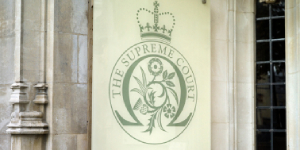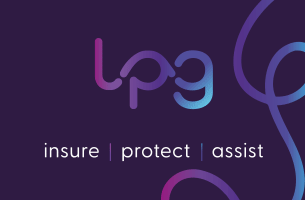 By Colin Low, Managing Director and Chartered Financial Planner at Kingsfleet Wealth, a member of Legal Futures Associate, SIFA Professional
By Colin Low, Managing Director and Chartered Financial Planner at Kingsfleet Wealth, a member of Legal Futures Associate, SIFA Professional
Investing Trust assets is not straightforward – choose your investment specialist with great care
You may have a client file on your desk relating to a Trust. That Trust may be an existing Trust that has been in operation for a number of years or even decades; or it may be one established by a Will; or perhaps an individual who is looking to put funds into Trust for the benefit of their children as a pre-emptive measure against inheritance tax liabilities.
Therefore, those clients may ask you for some advice as to what to do next. In many cases, Trusts can incorporate significant sums and it is therefore critical that your client (or the Trustee/s) follow the Trustee Act 2000 and seek suitable professional advice on the assets held within the Trust (and that applies to Financial aspects as well as Legal). Para 5.1 says, “(1)Before exercising any power of investment, whether arising under this Part or otherwise, a trustee must (unless the exception applies) obtain and consider proper advice about the way in which, having regard to the standard investment criteria, the power should be exercised.”
With Trusts being so varied in their structure, it is critical that the Financial Professional not only considers the investment return but also understands the tax issues that will arise when different investment structures are recommended.
What to look for in an adviser
Fundamentally, the structure of the investment wrapper that is appropriate for a Trust will depend on the nature of the trust, the objectives, purpose, and types of beneficiaries. It is therefore important, when working with the Independent Financial Adviser, that they can examine the Trust document to understand it fully.
Of course, an important issue is that not all financial advisers completely understand Trusts so, how do you determine who has the knowledge, skillset and understanding to be able to look after your clients in the most appropriate way?
Firstly, I would recommend that you seek independent financial advice as it will ensure that the adviser with whom you are working has access to all the various investment providers and solutions in the marketplace. To only work with a ‘restricted adviser’ will mean that they are limited in the range of options and may only be able to offer one provider. As Trusts can be in place for many years, it is important that you do not ‘tie-in’’ the Trustees to one solution that has no get-out clause in the future.
Secondly, I would suggest that you seek an adviser who is dedicated to progressing their knowledge on an ongoing basis and, for that, a Chartered Financial Planner or Certified Financial Planner will give you that peace of mind. In educational terms, these qualifications are at Level 6 (degree level) as opposed to the Diploma (Level 4) required to start as a financial adviser. Trusts have a level of complication which may not be understood by a less experienced adviser.
Thirdly, there is a very helpful qualification available to financial advisers interested in this type of work provided by STEP, which focuses on Trust and Estate planning. This leads to the ‘STEP Certificate for Financial Services’ and, for any adviser wishing to engage in this work on a regular basis, it would be beneficial for them to complete this as a demonstration that they understand the different types of Trusts and the most appropriate investment solution for each of them.
Types of Trusts
Naturally, Trusts do vary in their purpose and objectives, but primarily there are still three primary Trust structures which will determine the nature of the underlying investment.
Bare Trusts
A Bare Trust is typically used for funds held for a minor on the basis that they will have full access to this on their 18th birthday. The tax position is assessed against the beneficiary unless it is from gifted funds directly from the parent, in which case income generated in excess of £100 per year is assessed against the parent.
Naturally, this leads to many Bare Trusts being established by grandparents gifting money to grandchildren, but we have found this to be less likely given that a Bare Trust can be “busted” on an individual’s 18th birthday and grandparents are particularly wary of grandchildren choosing to access their funds and simply buy a motorbike and travel around the world.
Consequently, although these do tend to be in existence for the benefit of grandchildren, the investment solutions are effectively the same as if the individual owned the funds outright. Consequently, the investment of such funds would seek to make use of the beneficiary’s personal allowance, dividend allowance and annual CGT allowance.
Interest in Possession Trusts
Although many of these arrangements changed when the Trust regime was amended in 2006, the Interest in Possession (IIP) Trust lives on in a more common guise now of the Immediate Post Death Interest (IPDI) Trust.
Both IIP and IPDI Trusts are ways in which an individual receives the income generated from the underlying investment, so that the capital can ultimately be passed on to a further beneficiary on the death of the life tenant (the income recipient).
Many of these still exist in their original form as IIP Trusts, but the IPDI is becoming more prevalent as time passes since 2006. In many cases, the donor leaves a property and the life tenant is the individual who lives in that property until their death, with the plan that the remaining beneficiaries (the ‘remaindermen’) inherit that at a later date or the client’s investments can be left behind with the knowledge that the income generated will be passed to the life tenant and the remaindermen inheriting the capital value on their death.
So, this raises an issue that we have sometimes come across. One lawyer that we have worked with very closely over the years, dealt with the estate of an individual who had passed away and his civil partner was due to receive the life interest of the value of his invested assets, with further relatives receiving the capital on his death.
As there was an existing restricted adviser in place, the lawyer agreed to allow for them to be approached and after two failed attempts to obtain an appropriately suitable recommendation, we were then contacted.
The primary reason why we were contacted is that the other adviser had simply recommended an investment bond for the full value of the assets within the Trust and recommended that the life tenant took regular withdrawals from the investment bond to satisfy the life interest.
Potentially, that could have worked if the Will which established the Trust had permitted access to capital, but it did not. The Will clearly stated that it was to be income that was to be paid to the life tenant (income consists of dividends, interest and rental payments).
One of the key issues with an investment bond is that there is no income payable. All interest dividend and rental payments are accumulated within the bond wrapper and any withdrawals are effectively a removal of capital, rather than a payment of income. Consequently, the recommendation for an investment bond in a Life Interest Trust which only distributes income is wholly inappropriate.
It is clear that when recommending a solution for an IIP/IPDI Trust where income is defined as the arrangement to be distributed, then an ‘unwrapped’ selection of investment funds needs to be proposed, where an appropriate balance between income and future capital growth should be clearly evidenced. The balance can only be determined by the Trustees and so the adviser must consult with them to determine an appropriate income rate at outset and an objective to grow the capital in line with the potential time frame in which the remaindermen may inherit the capital.
I have used the term ‘investment funds’ advisedly. We have dealt with some trusts where the proceeds were originally invested in a limited portfolio of individual shares. Naturally, this gives limited levels of diversification and also greater complexity due to the Capital Gains calculations needed.
Given that Trusts have half the annual CGT allowance, this can lead to the assets being unchanged due to the concerns of the tax liability, especially given the scheduled reductions in allowance announced at the recent Autumn statement.
Discretionary Trusts
The primary consideration when advising on a Discretionary Trust is an understanding of the timescale involved. Some Discretionary Trusts are established with children due to inherit funds based on a determined age (perhaps when they reach 21, 23 or 25), but the Trust is written in such a way that other beneficiaries are possible at some future time.
Alternatively, a parent may place funds in a Discretionary Trust for the benefit of their three children, allowing the Trustees maximum flexibility to choose as to who to pay and when, and in what proportion they feel is appropriate.
Of course, the issue with a Discretionary Trust is that the tax on undistributed income is particularly penal at a rate of 45%. Furthermore, with trusts only receiving 50% of the capital gains tax allowance (as above in IIP/IPDI Trusts), then it allows very little room for manoeuvre to fully manage an investment portfolio.
However, this is where the old-fashioned investment bond can be highly appropriate. Sometimes referred to as a ‘Life Assurance Bond’, they benefit from a number of very useful features because they are taxed as a Life Assurance contract rather than under investment arrangements. This means that any gains or excess annual withdrawals (exceeding 5% of the original investment amount) are taxed as income rather than using CGT.
As we referred to earlier, an investment bond does not pay income, so the 45% undistributed tax charge does not apply. Secondly, within the bond wrapper, changes can be made to the underlying investment arrangements at any time without triggering capital gains tax liabilities. This is particularly helpful when seeking to optimise the underlying investment portfolio.
Finally, investment bonds still retain the amazing flexible option referred to as ‘assignment’. This allows individual ‘segments’ of the bond (or the whole bond if required) to be issued to a beneficiary in order for them to make an encashment themselves.
Given that the Income tax rate on Discretionary Trusts is so significant, encashing within the Trust is often particularly penal, so being able to assign segments of the bond to an individual and enable them to make the encashment can be very tax efficient indeed. Therefore, when investing trust assets into an investment bond, it is critically important to maximise the number of segments within that bond to give the greatest possible flexibility to Trustees, when they sign benefits over to individuals.
Related issues:
- It should also be noted that Discretionary Trusts may also benefit from the use of Business Relief (BR) assets, previously known as Business Property Relief.
- These may also be beneficial to move into a Discretionary Trust as they fall outside an individual’s estate after two years of holding. Therefore, if they are no longer in the estate after two years, then the owner can add them into a Discretionary Trust without any initial lifetime tax
- Most trusts now need to register with the Trust Registration Service.
- It should also be noted that there are additional measures to consider when investing for Charitable Trusts which rule out the use of Investment Bonds. Please do seek particular specialist advice on these as if investments are established incorrectly the consequences can be very painful (perhaps something for another article!)
This financial advisory company is listed on the SIFA Professional Directory of financial advisers (East Anglia Region) – to view their details please Click Here










